Upper Dolpa Trek
Trip Introduction
The Upper Dolpa trek is also an extraordinary adventure that takes you deep into the remote and mystical landscapes of the Dolpa region in Nepal. This trek offers a truly off-the-beaten-path experience, allowing you to immerse yourself in the untouched wilderness, ancient Tibetan culture, and breathtaking natural beauty.
Starting from the town of Juphal, the trail winds its way through rugged terrain, pristine forests, and high mountain passes, revealing awe-inspiring vistas at every turn. Upper Dolpa also known for its dramatic landscapes, including deep gorges, barren cliffs, and the vast expanse of the Phoksundo Lake, one of the deepest lakes in Nepal. The turquoise waters of the lake contrast beautifully with the surrounding rocky mountains, creating a scene of mesmerizing tranquility.
One of the highlights of the Upper Dolpa trek is the chance to explore Shey Phoksundo National Park, Nepal’s largest national park and a UNESCO World Heritage Site. The park is a haven for rare wildlife species, such as the elusive snow leopard, Himalayan blue sheep, musk deer, and a wide variety of bird species. As you traverse through the park, you’ll get treatment with encounters with this diverse and unique wildlife.
Exploring the Enchanted Realm: Upper Dolpa’s Hidden Treasures and Timeless Traditions
The region is also renowned for its deep-rooted Tibetan Buddhist culture. You’ll have the opportunity to visit ancient monasteries, such as Shey Gompa and Saldang Monastery, and witness the rituals and practices of the local monks. The people of Dolpa, predominantly of Tibetan descent, have preserved their traditional way of life for centuries, and their warm hospitality and rich cultural traditions offer a captivating insight into this ancient culture.
The trek takes you through remote and isolated villages, allowing you to interact with the friendly locals and learn about their traditional practices, including yak herding, farming, and trading along ancient salt routes. You’ll be enchanted by their traditional attire, unique dialects, and the warm smiles that welcome you along the trail.
The Upper Dolpa trek is a physically demanding journey that requires a good level of fitness and endurance. The rugged terrain, high-altitude passes, and long distances make it a challenging but immensely rewarding adventure. The trek is less crowded than other popular routes in Nepal, allowing you to experience the true solitude and untouched beauty of this remote region.
Conclusion and Summary
In conclusion, the Upper Dolpa trek is a remarkable expedition that takes you on a transformative journey through the unspoiled landscapes and ancient culture of Dolpa. It offers an escape into a world where nature reigns supreme, and traditional ways of life remain untouched by modern influences. This trek is a true testament to the raw beauty and rich cultural heritage of Nepal, leaving you with unforgettable memories and a deep appreciation for the wonders of the Himalayas.
Itinerary
-
Day 01: Arrival in Kathmandu (1300m/4264ft)
Upon our arrival in Kathmandu, a representative from Everest Expeditions Nepal will pick us up from the airport and take us to our hotel. In the afternoon, we may take a rest or visit Everest Expeditions Nepal office. In the evening, there will be a welcome dinner hosted by Everest Expeditions Nepal. For dinner, you will be served excellent authentic Nepalese cuisine. Overnight in Kathmandu.
Included meals: Dinner
-
Day 02: Kathmandu: sightseeing and trek preparation
Today after breakfast we start a guided tour to several of the most historical and spiritual attractions in Kathmandu. Some of these landmarks are considered World Heritage Sites including the historic Durbar Square, the sacred Hindu temple of Pashupatinath, the famous ‘Monkey Temple’ (Swayambhunath) and Buddhist shrine (Bouddhanath), which is one of the largest stupas in the world. At noon, there will be a pre-trip discussion where we can meet our trek leader and other team members. Everest Expeditions Nepal will brief us regarding our trek as well as provide us with an opportunity to ask any questions we may have regarding our upcoming adventure. Overnight in Kathmandu.
Included meals: Breakfast
-
Day 03: Fly from Kathmandu to Nepalgunj: 1 hour
After our short excursion in Kathmandu, we take an hour-long flight from Kathmandu to Nepalgunj, located in Western Nepal. Nepalgunj, a town near the Nepal-India border, is also the gateway to Simikot, Humla. The town itself is an interesting Terai town that showcases the diverse culture of Nepal. In Nepalgunj, we visit the local market, mini-zoo and nearby villages. Overnight in Nepalgunj.
Included meals: Breakfast
-
Day 04: Fly from Nepalgunj to Jhuphal (Dolpo) and trek to Dunai (2,850m/9,348ft): 45 mins flight, 2-3 hours trek
Day 04: We fly to Jhupal after breakfast. The town is beautifully located over the Himalayan foothills, with views of Annapurna and Dhaulagiri peaks to its north. Here, we meet our trekking staff and begin the adventure. We walk through terraced fields to the Bheri River and its narrow gorge. We continue walking to Dunai, which is the administrative headquarter of the Dolpo region. We explore the small town in the evening and camp there for the night.
Included meals:Breakfast Lunch Dinner
-
Day 05: Dunai to Ankhe (2,896m/9,499ft): 5-6 hours
We leave Dunai and cross a suspension bridge and turn to the west following a trail past a hospital. The trail ascends up the side of the treeless, Thulo Bheri valley before entering Phoksundo river valley. During the walk we get to the view of Kagmara Peak up the valley. We pass through walnut groves, Dhera and Rahagaun villages, walk down dense jungles and finally reach Ankhe. Overnight in Ankhe.
Included meals: Breakfast Lunch Dinner
-
Day 06: Ankhe to Sulighat: 5-6 hours
Our trail ascends and descends along a wooded riverbank and climbs on a steep trail. The ups and downs can be a bit monotonous, but there are several streams along the way that offer a chance to cool off. The trail eventually leaves the forests and passes through a grassy slope high above the river. We trek downhill on a trail surrounded by lush forests before reaching a cliff followed by a dizzying drop on a wobbly stone staircase to the river bank. We continue trekking until we reach Sulighat where we spend the night.
Included meals:Breakfast Lunch Dinner
-
Day 07: Sulighat to Phoksundo Lake (3,611m/11,849 ft) 4-5 hours
We continue our journey along the valley floor to the confluence of the Phoksundo and Pungmo rivers. After crossing a bridge, we walk on the western bank of the Pungmo Khola. The trail passes through a cedar forest before reaching Palam village. From here we trek up to a ridge and enjoy distant views of Phoksundo Lake and a spectacular waterfall, one of the highest in Nepal. Next, our trail descends through birch forests to the upper reaches of the Phoksundo Khola, and then to the picturesque Ringmo village with its mud-plastered chortens and mani walls. From here it is a short walk to the shores of the Phoksundo Lake. Overnight at Phoksundo Lake.
Included meals: Breakfast Lunch Dinner
-
Day 08: Acclimatization and rest at Phoksundo Lake
Today will be a well deserved rest day for acclimatization at Phoksundo Lake. During the day we can embark on a short hike to the village of Ringmo and it’s Tibetan Buddhist Monastery. During our short walks, we also get a chance to get acquainted with the local culture. The Dolpo people wear homespun clothing that is sometimes dyed a maroon color and they favor Tibetan-style somba or dhocha (boots with upturned toes) for foot wear. Both men and women often wear religious amulets and strings of coral, amber and turquoise. Overnight at Phoksundo Lake.
Included meals: Breakfast Lunch Dinner
-
Day 09: Trek to Phoksundo Khola: 4-5 hours
Our trail moves around the top western end of the Phoksundo Lake as it contours on a rocky ledge along the lake’s western bank. This unsteady trail suspended on a gangway of wood supported on pegs driven into crevasse in the rocks, signals the remoteness of the area we are about to enter. At the westernmost edge of the lake the path leads through a lush meadow that opens up into the flood plain of the Phoksundo Khola. Then we walk through the valley, crossing the river and avoiding the occasional boggy marsh underfoot and then coming on the bank of the river to the overnight camp.
Included meals: Breakfast Lunch Dinner
-
Day 10: Phoksunds Khola to Phoksundo Bhanjyang: 6-7 hours
For an hour or so we walk on a trail that leads us along the level path through a glacial valley which heads due north. At the confluence of the Phoksundo Khola and another mountain stream, there is an old wooden bridge. From here, we walk towards the north-east. A long climb brings us to a sheep meadow where our trail veers up a steep ravine. A hard climb to the top brings us to yet another valley where we can see the Kang-La pass. We set up our camp near the pass in a place that Peter Matthiessen christened ‘Snowfields Camp’. During our trek today we also get to admire the views of Chhamlang peak 6 (6739m) and peak 7 (6105m).
Included meals:Breakfast Lunch Dinner
-
Day 11: Phoksundo Bhanjyang to Shey Gompa (4,500m/14,760ft) via Kang-La pass (5,360m/17,581ft): 5-6 hours
In the morning, we ascend on a steep trail littered with slate towards the pass. The climb to the top of the pass is quite strenuous. From the top of Kang-la pass we get excellent views of the large valley dissected by a gushing river. We descend to the valley floor on a steep trail. Next, we walk on a meandering trail along the banks of a river, crossing and re-crossing it several times. There are mud caves lining the hills overlooking the river. We also pass through meadows where we see grazing yaks, hundreds of sheep and domestic mountain goat (Chyangra). After crossing a quaint log bridge we reach the Shey Gompa compound where we will be spending the night.
Included meals: Breakfast Lunch Dinner
-
Day 12: Acclimatization and rest at Shey Gompa
Shey Gompa was built in 1655 and the monastery is noted for its giant copper with gilded gold statue of a seated Shakyamuni Buddha. To the east of the gompa is Crystal Mountain which is one of the strangest mountains, as its contorted cliffs are laced with quartz and embedded with a rich variety of marine fossils. Today is another well-earned rest day for acclimatization. We spend the day hiking around Shey village which is famous for its ancient pre-Buddhist culture, the Bon Po. In Dolpo the ancient Tibetan way of life combines animism with the teaching of Buddha. Overnight in Shey Gompa.
Included meals: Breakfast Lunch Dinner
-
Day 13: Shey Gompa to Namduna Gaun (4,800m/15,744ft) via Saldang La (5,200m/17,056ft): 6-7 hours
We begin the day by following a pleasant trail amidst juniper trees which descends into a grey, stony canyon. Then the path begins to zigzag over bare rocks and coarse eroded soil until it eventually brings us to the top of Saldang-la pass. The subsequent descent towards the north is long and tiring but grazing yaks and sheep, and nomadic tents made from yak hair is a comforting sight. In Namduna Gaun we visit Namgung monastery. The red stone monstery is built against the backdrop of a cliff on the north wall of a gorge. Overnight in Namuda Gaun.
Included meals: Breakfast Lunch Dinner
-
Day 14: Namduna Gaun to Saldang (3,620m/ 11,874ft): 4-5 hours
We leave the village and climb up a slope and begin a long walk along dusty barren mountains. After 3-4 hours of hard climb, we begin to see Saldang Village below us on a plateau high above the Namga Khola stream. It has a picturesque appearance. Saldang is the largest village of the inner Dolpo area. The village stretches for nearly two kilometers on an open slope and consists of five villages having about eighty well-built houses with nearly six hundred people. It is a prosperous village not only agriculturally but also for its strategic location on a trade route to Tibet. Overnight in Saldang.
Included meals: Breakfast Lunch Dinner
-
Day 15: Saldang to Yangze Gompa (4,960m/16,267ft): 4-5 hours
From Saldang, we walk further north along the Nagon Khola (river) on a wild and barren terrain. We begin our walk on a fairly gradual path with few ups and downs. On the way, we pass through Marang and Ki villages. Next, we cross a tributary of Panzang River and walk towards the east and cross the river again before reaching Yangze gompa which houses an old Bon-Po Monastery. Overnight in Yangze Gompa.
Included meals: Breakfast Lunch Dinner
-
Day 16: Yangze Gompa to Sibu (4,560m/14,957ft): 6-7 hours
From Yangze, there are two trails that connect to Sibu. To save time we will retrace the path back towards Saldang village, which will be much easier and shorter than the other route. From Saldang we walk along a river and pass through terraced fields, stupas, chortens, heaps of mani stones and a Chaiba monastery, then pass through the Namdo village, which is also prosperous, with about sixty houses having nearly 400 inhabitants. It stretches for more than 5 km on the high slopes to the left of Nam Khong Khola. The Namdo monastery is located near the river bed. Our journey continues further down the river for another two hours to camp near a small settlement of Sibu.
Included meals: Breakfast Lunch Dinner
-
Day 17: Sibu to Jeng-la Phedi (4,900m/16,072ft): 5-6 hours
We walk along the Nam Khong Khola for a while and pass by caravans with yaks that are moving towards the Tibetan border. After turning east and walking for a while, we arrive at a confluence of two small streams. Next, the steep trail ascends to a grazing area below the Jeng La pass (4,900m/16,072ft). Our camp will be set up in this beautiful meadow. Overngiht in Jeng la Phedi.
Included meals: Breakfast Lunch Dinner
-
Day 18: Jeng-la Phedi to Tokyu Gaon (4209m/13809ft) via Jeng La pass (5,090m/16,695ft): 5-6 hours
We get up early in the morning and set forth on today’s trek. It will take us two long hours to reach the top of the Jeng La pass from where we get remarkable views of the north face of the Dhaualgiri massif. From here we descend on a rough trail to the Tarap Valley, a fascinating valley with vast plains in high mountains that extends twenty kilometers along Tarap Chu river. We camp close to the monastery at Tokyu.
Included meals: Breakfast Lunch Dinner
-
Day 19: Tokyu to Dho Tarap(4,040m/13,251ft): 4-5 hours
We trek downhill on a plain valley with patches of lush grass on both sides of the river which is completely different from other parts of inner Dolpo. There is also a marsh which is a common feature in the Desert Mountains of Tibet and the Ladakh Himalaya. Both the Bon Po and Buddhist sects are practiced in the valley. After a short trek, we reach Dho Tarap). Overnight in Dho Tarap.
Included meals: Breakfast Lunch Dinner
-
Day 20: Rest Day at Dho Tarap
We spend today resting and strolling in the village of Dho Tarap which is surrounded by an irregular stone wall. Our walks will help us get acquainted with the local culture of the area. At Dho, about 40 houses are divided into three clusters and built in a haphazard way inhabited by few Tibetans and mostly Magars who are a hill tribe of Nepal. While here, we can visit a Buddhist Gompa which is closest to our campsite or we could embark upon a 40-minute walk and visit a Bon Po Gompa.Overnight in Dho Tarap.
Included meals: Breakfast Lunch Dinner
-
Day 21: Khanigaon to Tarakot (2,537m/8,321ft): 4-5 hours
From the camp we follow a trail that takes us to the village of Lalberi. Our trail then passes through a lush forest, descends into another gorge and continues to follow the river again. After reaching Tarakot, we can visit Sandul Gompa which lies about 8 km east of the village at a juncture of Barbung Khola and Tarap Chu. The monastery stands on a hill to the south of Bheri River. Today we camp by the Tarap Chu river about 150 meters below Tarakot, near the police post. Overnight in Tarakot
Included meals: Breakfast Lunch Dinner
-
Day 22: Tarakot to Dunai (2,140m/7,019ft): 5-6 hours
We begin our trek on a trail behind the Bheri River before crossing a bridge near the Lawan village. Our trail will continue alongside the big Bheri Rriver ascending until the Byas Gadi. From here the trail moves towards the west on a relatively easy trail. We cross the river again near the Lochakhola Gaon and ascend to Dunai for an overnight stay. Today’s trek will mostly be on a wonderful gorge with pine trees. Overnight in Dunai.
Included meals: Breakfast Lunch Dinner
-
Day 23: Dunai to Jhuphal: 2-3 hours
Fron Dunai, we trek along the Bheri River enjoying the beautiful landscape. On the way, we pass through Dhupichaur and Rupgad villages as well as a temple. We continue trekking via Kalagaonda village and Motipur village before reaching the small airstrip. Overnight in Jhuphal.
Included meals: Breakfast Lunch Dinner
-
Day 24: Fly from Jhuphal to Nepalgunj and then to Kathmandu
We take the earliest flight from Jhupal to Nepalgunj. Upon reaching Nepalgunj, we return to Kathmandu on the next available flight. After arriving in Kathmandu, we will be transferred to our hotel. There is nothing to do but trade emails with travel companions and organize the photos. To celebrate the successful completion of our journey, we will have a farewell dinner hosted by Himalayan Glacier. Overnight in Kathmandu.
Included meals: Breakfast
-
Day 25: Rest day in Kathmandu
This is an extra day set aside for you to explore Kathmandu on your own. You can spend the day getting ready for your next day’s flight, do some souvenir shopping, or if there is a place is Kathmandu that you really want to visit, then Everest Expeditions Nepal can arrange that too. In the evening, there will be a farewell dinner hosted by Everest Expeditions Nepal to celebrate the successful completion of your journey in the Dolpo region of western Nepal. Overnight in Kathmandu.
Included meals: Breakfast Dinner
-
Day 26: Final departure
Our adventure in Nepal comes to an end today! A representative from Everest Expeditions Nepal will take us to the airport approximately 3 hours before the scheduled flight.
Included meals: Breakfast
Important Note
Your safety is of paramount concern while traveling with Everest Expeditions Nepal. Please note that your leader has the authority to amend or cancel any part of the itinerary if it is deemed necessary due to safety concerns. Every effort will be made to keep to the above itinerary; however, since this adventure entails travelling in remote mountainous regions, we cannot guarantee that we will not deviate from it. Weather conditions, health condition of a group member, unexpected natural disasters, etc., can all contribute to changes in the itinerary. The leader will try to ensure that the trip runs according to plan, but please be prepared to be flexible if required.
Important
Note : Your safety is of paramount concern while traveling with Everest Expeditions Nepal. Please note that your leader has the authority to amend or cancel any part of the itinerary if it is deemed necessary due to safety concerns. Every effort will be made to keep to the above itinerary; however, since this adventure entails travelling in remote mountainous regions, we cannot guarantee that we will not deviate from it. Weather conditions, health condition of a group member, unexpected natural disasters, etc., can all contribute to changes in the itinerary. The leader will try to ensure that the trip runs according to plan, but please be prepared to be flexible if required.
Include / Exclude
Cost Includes:
-
- Airport Pick-up and Drop Off,
- Licensed and trained trekking guides,
- potters for carrying goods and supplies,
- Meal on full board (breakfast, lunch, dinner) basis during the trek
- 3 Nights Accommodation in the 3 Star Hotel in Kathmandu with B & B. (Bed & Breakfast) on Twin Sharing Basis.
- All accommodation on Tent during the trek on sharing Basis.
- All meals and hot beverages during the trek.
- Transportation to and from trail head by Private and Sharing Transport
- All necessary documents and permits for trekking (where applicable)
- National Park/Conservation Area entry Permit, Insurance, and
equipment for the staffs. - Coordination of quick Rescue service (Costs covered by your Insurance Plan)
- Trekking staffs wages etc.
- Welcome dinner in a Nepali Cultural Dance restaurant in Kathmandu.
- Trekking Map, T-shirt, and Trekking certificate.
- Exclusive of Medical Kit Bag
- All Government and local Taxes
- International Flight ticket re-confirmation.
- Meals will be Start when your Trek starts.
- Domestic Flights
- Domestic Flights for Trekking Guide.
- Trekking Staff Insurance of $10,000 Per Person.
Cost Excludes:
- International Airfares,
- Travel/Trekking Insurance,
- Excess baggage charges More than 16kg and hand bag more than 5 kg in domestic flights.
- Visa fees.
- Airport Departure Taxes.
- Drinks (Cold and Alcoholic) Rescue charge.
- Tips for The staffs.
- Expenses of Personnel nature and Permit and Liaison officer fee (where Applicable.
- Meals during stay in the Kathmandu
- Extra Domestic Ticket of Jomsom, Pokhara etc.
- Extra Hotel in Kathmandu and Pokhara
Price per person
Usefull Information
Dolpo region is the most remote and least developed district in Nepal. Although a few anthropologists and geographers had explored the region, the entire district was closed to trekkers until 1989 when the southern part of Dolpo was opened to organized trekking groups. Peter Mathesons book – The Snow Leopard and Snell grove – Himalayan pilgrimage have contributed to the mystique and attraction of Dolpo.
Dolpo region situated between the Tibetan plateau and the Dhaulagiri Himalayan range is the highest inhabited land of Dolpo. Geographically a southern extension of Tibet, it lies within the borders of the state of Nepal, since 1984 has been the countrys largest national park and conservation, the park sustains an abundance of wild life including Musk Deer, Himalayan Blue Sheep and the legendary elusive Snow Leopard, as well as being home to a fascinating race of Tibetan speaking people. The hardy highlanders of Dolpo are traders, exchanging barley for Tibetan rock salt and they take their yaks onto the Tibetan plateau during the summer for grazing.
Nepals first English subtitled movie on Dolpo -The Caravan- or -The Himalaya- was a huge success and was nominated for the Oscar Award in the best foreign language film category. Boundaries of the park include within 3,500 square kilometers of land, mostly above 4,000 meters. Before 1989, when the southern regions were opened to trekking groups, very few explorers had visited the area. Two notable visits were the first mountaineering expedition by Dr. Herbert Tichy in 1953 based in Kaigon and the other visit by John Tyson in the early sixties. Dolpo is one of the most beautiful treks in the remote areas of Nepal, very rarely visited by outsider.
During the Upper Dolpo we start from Jhupal village, we begin this wonderful adventure, encountering interesting places, people, villages, valleys and serene forest of pines, oaks and rhododendron, the trek passes many gigantic mountain ranges and over the Numala pass at 5,400m till we reach the Phoksundo lake at Ringmo village in the “Phoksundo National Park”.
At Ringmo, the highlight of our trip we will have two nights here to enjoy the beauty of the deep blue waters of the Phoksundo lake and the surrounding snow peaks of Kanjirowa Himalayan range, with time to visit the nearby isolated village of Ringmo and its Monastery. Our classic journey continues to the amazing country of Crystal Mountain at Shey Gomba, following the ancient Trans Himalayan Trade route and back to Jhuphal for the flight back by an alternative route, giving you more opportunity to explore this fascinating wild west of Nepal Himalaya.
Best Season
The best time for Lower Dolpo trek is from March to May in Spring and October-November in Autumn season.
Important Note
Your safety is of paramount concern while traveling with Everest Expeditions Nepal. Please note that your leader has the authority to amend or cancel any part of the itinerary if it is deemed necessary due to safety concerns. Every effort will be made to keep to the above itinerary; however, since this adventure entails travelling in remote mountainous regions, we cannot guarantee that we will not deviate from it. Weather conditions, health condition of a group member, unexpected natural disasters, etc., can all contribute to changes in the itinerary. The leader will try to ensure that the trip runs according to plan, but please be prepared to be flexible if required.
Important
Note : Your safety is of paramount concern while traveling with Everest Expeditions Nepal. Please note that your leader has the authority to amend or cancel any part of the itinerary if it is deemed necessary due to safety concerns. Every effort will be made to keep to the above itinerary; however, since this adventure entails travelling in remote mountainous regions, we cannot guarantee that we will not deviate from it. Weather conditions, health condition of a group member, unexpected natural disasters, etc., can all contribute to changes in the itinerary. The leader will try to ensure that the trip runs according to plan, but please be prepared to be flexible if required.
Equipment List
FAQs
-
 Best Seasons March to May, September to November
Best Seasons March to May, September to November -
 Group Size 2-20
Group Size 2-20 -
 Duration 26 DAYS BOOKING OPEN
Duration 26 DAYS BOOKING OPEN -
 Maximum Altitude 5550M
Maximum Altitude 5550M -
 Trek Difficulty Challenging
Trek Difficulty Challenging

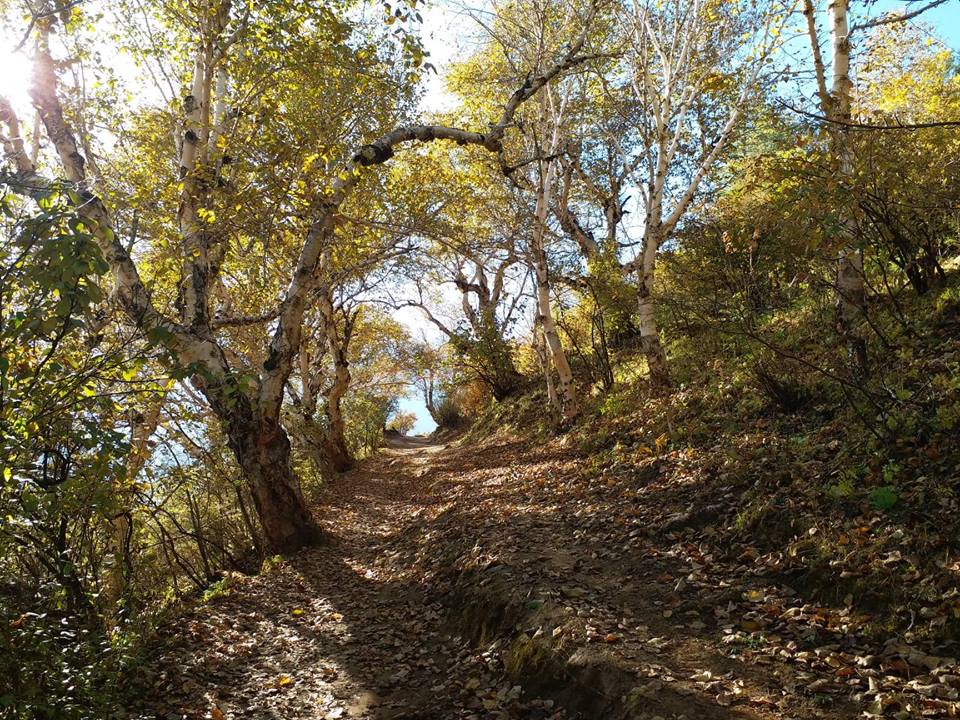


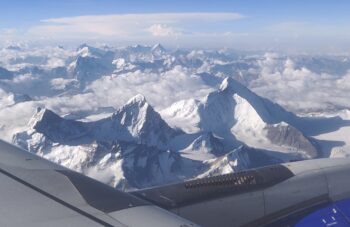
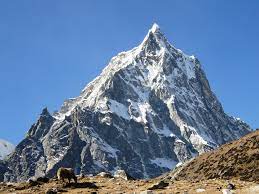
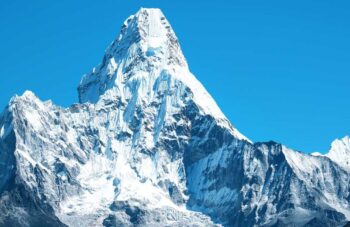
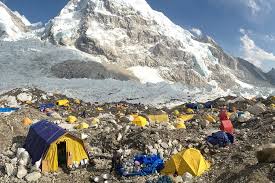
Leave a Reply